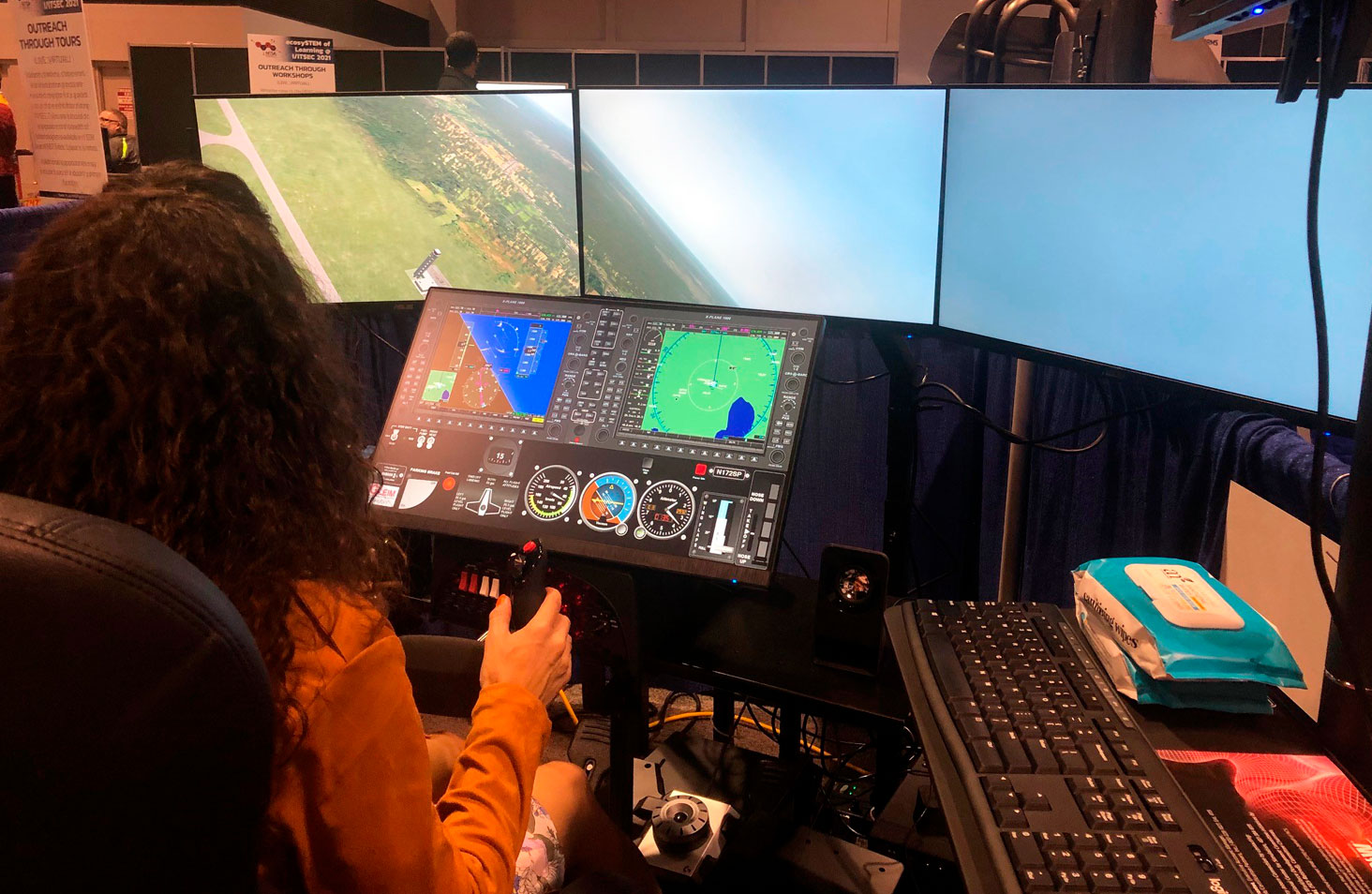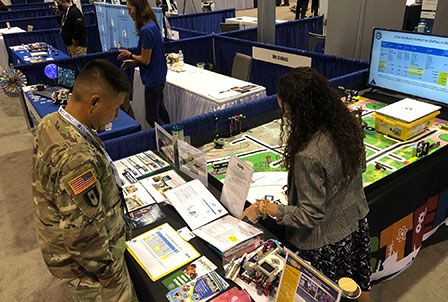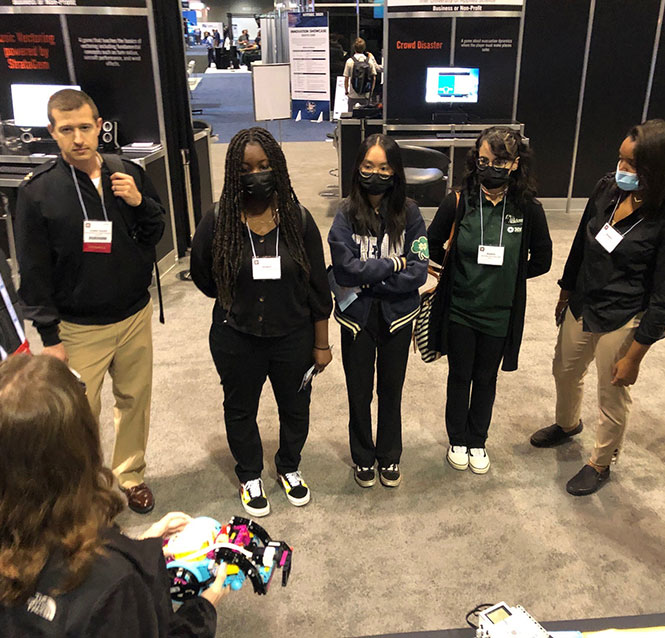
Learning to Fly: Lab Offers Latest in Simulation Technology


More than half of the personnel at the Naval Air Warfare Center Training Systems Division (NAWCTSD) are in science and engineering. These STEM professionals work in a variety of areas – computer programming, networking, cybersecurity, engineering, research, and development.
What sets the lab apart, though, is their dominance in training solutions, including computer-based flight training.
“We’re part of the Naval Air Systems command, which conducts R&D in naval aviation systems, but we’re probably best known for our flight simulators,” says Long Nguyen, Engineering Manager for the Naval Air Warfare Center Training Systems Division. “People see us as the center for excellence for flight simulation. And it’s not just the technical part – though there’s a real coolness factor in regard to the technology – but there’s also the human side of it. We do a lot of research and conduct with human-in the loop experiments to monitor the effectiveness and safety, like to see if they might get motion sickness from it.”
Some NAWCTSD interns get to experience that for themselves as a participant, research assistant, or test personnel operating Navy aircraft simulators. NAWCTSD hosts interns at both high school level (Science and Engineering Apprenticeship Program) and college level (Naval Research Enterprise Internship Program).

Nguyen says that summer interns get to work almost immediately after arriving – their specific roles and tasks largely depend on their class standing and skill level at the time they arrive.
“Usually, they can start off building things, such as hardware which mostly consists of putting wires and board together, hooking up servers, and they can learn a lot during that time,” he explains.
Interns who are already adept at coding might be asked to help program. Those with more advanced research experience – such as those who took science classes with labs in school – might be asked to develop a test apparatus, collect and analyze the data, and write up a report. Even if interns are not ready for those kinds of tasks, they can participate in testing procedures and review data.
“The fastest way to get them involved is in testing and programming,” Nguyen explains.
Nguyen fondly remembers one student who had experience in her school’s engineering shop and “just built a lot of things really fast. She was very industrious.”
While the internships are extremely competitive, applying to NAWCTSD provides a second chance for students to get involved. In the Fall, the command accepts another round of interns to participate in a two-week program in which they help the lab prepare for – and attend – their exhibition at the annual Interservice/Industry Training Simulation Education Conference (I/ITSEC), which hosts more than 15,000 participants and exhibitors.
“It's exciting for them because they get to see hundreds of exhibitions in the latest and greatest technology,” Nguyen says. “It’s not just one lab or one base and it’s international so we also have the latest and greatest from our NATO allies, as well. It provides the students with access to journals, peer reviewed papers, tutorials, presentations. In that one week where it happens, they get exposure to all of that as well as our own training, experimentation and technology.”
NAWCTSD hires about 20 percent of their former interns. Others go to other government agencies and some go into the private sector. In fact, one of the benefits an internship with NAWCTSD provides, Nguyen points out, is that they are given opportunities to make contacts at their private industry partners such as Lockheed Martin and Northrop Grumman.
“We don’t see them as competition,” he explains, noting they even organize field trips for interns and other employees to give them a chance to visit the companies. “The real value is getting that networking opportunity and learning about the things they don’t think of before they go into the internship.”
Even if they end up going to work in the private sector, the internship will also provide valuable and sought-after experience working for the government, experience valuable to other employers.
As for what makes a successful internship, Nguyen advises incoming interns to make the best use of the time, whether they are there for the Summer or the Fall.
“The ten weeks go by fast; the two weeks go by even faster,” he says. “The ones that stand out to us the most are the ones that make the most of it and go beyond what’s required – that jump into experimentation and contribute as a participant.”